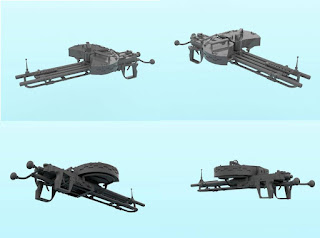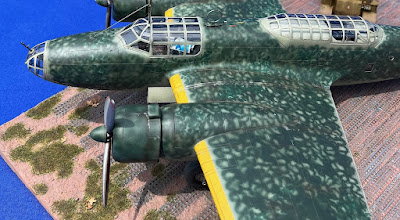This has been on my to-do list for almost 2 decades now. And then it came time to do it. Always easy to say but not so easy to do. I always try to make my projects into something more than a “toy”, and that means I have to have the best data possible.
“Some photos” and “three-views” just won’t cut it with me. And...Once again George came through! ... With...Not one, but two sets of trustworthy drawings! With the photos and articles I already had collected over the years, I felt it was time to do this one.
I like to think of it as the Japanese subject plane that “no one pays much attention to”. Surprising, as this is without much doubt, the best Japanese bomber to come out of the war.
Originally planned to be an Army heavy bomber to be used potentially against the Soviet Union with various iterations being developed for other roles, it ended up being used in a way that the original planners never could have imagined...
A torpedo bomber in Naval operations.
The Mitsubishi Ki 67 "Hiryu" (Flying Dragon) simply came too late and didn’t have the crews to use it effectively.
Six hundred and ninety eight were produced with about 538 converted to carry a torpedo.
Thanks to finish / markings research done by Steve Ferguson and approved by George, this one represents a plane flown during the Battle of Leyte Gulf in October of 1944 from the 1st Chutai JAAF 98th Regiment. Fate...unknown. All painted on.
I don’t do a lot of recording in photos anymore. I just like to get on with the build. This looked to be a project that I could do in my usual way...vac forming over carved / shaped wood patterns. Details built separately and added as assemblies.
That worked fine. But then...I always seem to find a “challenge” in my little projects. And I clearly hadn’t thought about this one until it the fuselage spoke and said...”time to do the nose and tail”. And they looked so nice in the drawings! Just some “clear parts”.
I just didn’t realize until I studied all that data...there’s a LOT of “Stuff” in those clear parts. I had never built a “ship-in-a-bottle” before. I have now. And once it was all in there and the assemblies were added to the fuselage and blended in, there’s no “going back”.
If anything came loose, the plane became a “rattle”. I now have a new definition of “be careful” during construction! It’s still in there. Since I’ve done quite a few Japanese subjects now, I feel pretty confident that things like the guns, torpedo and interior components are decent representations of the real things. (Lots of books, internet, etc. on these things) It satisfies me and I don’t build things for contests.
Again...with the generous help from George and ever-diminishing patience from me...There’s another “significant historic subject” next to the other ones.
- Bill Bosworth -






















































